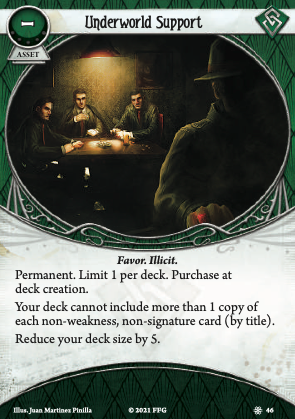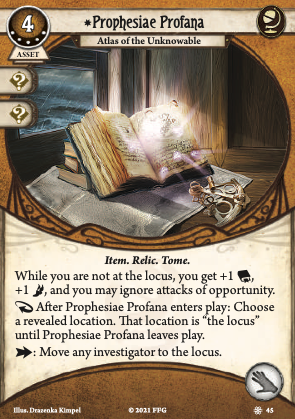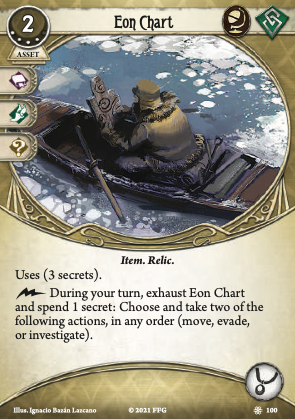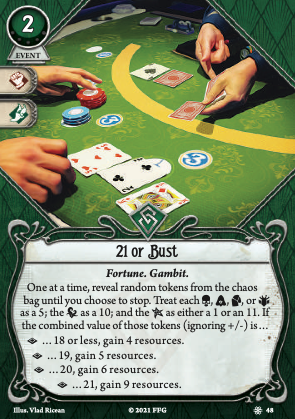
"Highlander" decks in most games are interesting, because you are ending up with far more variance in exchange for some benefit.
This is an especially interesting highlander card because it is paying you off for rolling highlander... with consistency?
Lets take an opening hand mulligain, assuming a 33 vs 28 card deck with 2 weaknesses and 1 signature, where we ignore the weaknesses and are just trying to hit one, super specific card at all costs.
In a standard deck, if you 'hard mulligain' for the card, you have about a 54% chance of finding at least one copy.
In an Underworld Support deck, you only have a 35% chance of getting that copy.
This means this card isn't great for increasing your odds of getting your one specific card 'by default.' Deck thinning turns out to be fake, yet again...
OR IS IT?
Lets look for situations where it works better! Because this is not an unsalvageable situation
Firstly, there is the case where you have alternatives that are viable. Weapons are a great example. If your deck is normally running two copies of a weapon (As some of you psychos are!) and running Prepare For the Worst, and you happen to get the tutor rather than the weapon early, you have an 50% chance to find one copy in your 9 card search right away, and a 70% chance if you wait 3 turns (and draw 3 cards) before searching to see it in draws and searches, normally. But if you run both Prepare and Prepare with Health, and two DIFFERENT weapons, you have an 65% chance to find it right away, and an 80% chance to draw it 3 turns later.
Some pretty meaningful improvements, if not drawing your weapon in that scenario screws you, you will be salvaging 1 in 10 games that way, roughly. But you will notice the effect is more pronounced if you do it earlier. So as long as you can do this for most of the tools in your deck and bypass the highlander rule, you can get noticeably more consistent both draw to draw and for searches or other bulk draw scenarios.
Deck thinning is only fake if the cost is not worth the consistency, or if you are doing something dramatic and silly to get rid of the cards. In reality, deck thinning is VERY real (every card drawn is deck thinning after all), the question is 'does only running singletons of my cards noticeably make my deck worse more than it helps? It is going to be up to how dramatic the cost of running highlander really is in your classes. Mystic and Guardian Rogues have a lot of redundancy in their best tools, while a rogue hybrid (or anyone with access to level 0 rogue cards!) who have more specialized cards, like Survivors, may struggle to find alternatives for everything. It also limits more niche strategies: Sure guardians have a lot of weapons, but if you are going something more narrow like bless synergy it is harder to find replacements.
And, oh hey... wait a minute... isn't there a Rogue Mystic who doesn't mind having a diverse set of abilities because she can recursively play them as long as she can consistently get them into their opening hand, and who would love to more consistently nab one of her 3 copies of her signature?
Sefina goes from an effectively 38 card deck, down to a 36 card for the purposes of her opening hand. This means, despite her upshot of drawing 13 cards in her opener, her chance of seeing any specific cards she took two of is only 60%. But a lot of her staple tools have viable alternatives. Sure, everyone loves Shrivelling but would it really be such a nightmare to run armageddon in a non-curse deck if it let you ensure you open with a 'weapon' almost 20% more often? And that is just the really bad replacement! Sixth Sense and Rite of Seeking are downright fairly competitive with each other, and there are plenty of fantastic rogue and mystic event cards to populate your deck with to ensure you can cast your bag of tricks.
Sefina is probably most likely candidate for this card for that reason, though it isn't impossible for others to find value from it if they have enough fantastic options, and at the same time I am not holding my breath for this to be a "Sefina Standard" either.
The most 'valuable' aspect of this card though, is to do what Highlander as a format in MTG was originally intended to do: Force you to use more creative decks and explore more of your collection. While it is possible to really math out the benefits and say "Oh wow, a 14% higher chance to get the card I want in X situation" it is always going to be questionable if the increase in getting A tool for the job is better than always getting THE tool for the job.
The real value in this card, and why I suspect it will be popular no matter how good or bad it is, is that it is almost a voluntary taboo that forces you to really evaluate every funky 'offbrand X' in your collection, with juuuust enough reward behind it to make it a pleasant experience... and, maybe, just maybe, if you are a really clever deck builder, a card that can actually give you an advantage.




